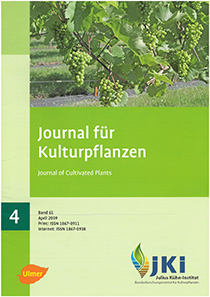Copper Contents in Crop and Grassland Soils and their Relation to Copper Loads from Plant Protection
Keywords:
Copper background values, copper loads, fertilization, agricultural soilsAbstract
Mean Cu contents of uncontaminated agricultural soils in Germany (background values) are between 8 and 42 mg Cu/kg soil (DM), with most of the soils (90-percentile) staying below 70 mg Cu/kg. Due to its low mobility copper accumulates in the soil if it is added above plants’ requirements. According to current law (soil protection ordinance, sewage sludge ordinance, biowaste ordinance), total copper contents >60 mg Cu/kg are to be seen as critical. Copper inputs into agriculture mainly stem from the use of mineral fertilizers and farmyard manures as well as the application of pesticides. Typical Cu loads from fertilization range between 50-500 g Cu/ha·a. These are well below the loads allowed for the application of copper containing pesticides, which may be up to 6000 g Cu/ha·a according to EU legislation. In contrast to this, the German soil protection ordinance defines a tolerable additional load of 360 g Cu/ha·a based on ecotoxicological grounds.
DOI: 10.5073/JfK.2009.04.01, https://doi.org/10.5073/JfK.2009.04.01








